This is a true treasure, a unique jewel of popular culture that, although it has come down to us in a form clearly indebted to Baroque aesthetics and iconography, has its earliest roots in the medieval centuries when, especially after the Black Death (1347-48), the theme of death took center stage in music. Verges' Dance of Death, therefore, retains anthropological, symbolic, and historical elements that are, in fact, part of the cultural heritage of all of Europe.
The scythe
The flag
The Platets
The Clock
The drum
The Torches
The first dancer in the Verges Dance of Death is known as "la Dalla". This adult skeleton leads the group and carries a scythe with the inscription Nemini Parco , which means "I spare no one". He is the only dancer who makes a complete 360º turn with each movement. With the scythe in the reaping position, he turns completely around as if he were sitting on everything. The first symbol of Death was a bow and arrows, more typical of a warlike character, common in medieval times, but soon the agricultural implement of the scythe will take center stage, as is the case in the Verges Dance of Death.
The Flag or Flag-bearer is an adult skeleton who stands in the middle of the dance, behind the scythe. This dancer carries the "Flag of Death", a black banner with a skull and crossbones representing the rule of Death, and two very explicit inscriptions: on one side " Nemini Parco " and on the other " Time is short ", an old Catalan translation of the Latin expression Tempus Fu .
Next to the Flag are the Platets, two child skeletons carrying a saucer full of ashes, showing the spectators what they will one day be, regardless of age or social status. Death is universal, and penitential ashes are the way to prepare you. They refer to Memento homoquía pulvis se te in pulverem revertirios, remember that you are dust and to dust you shall return.
The last of the dancers is the Clock, who closes the group of jumpers. He is a child skeleton wearing a watch without holes, and with each dance step he points to a random hour with his finger. The message is clear: we must be prepared because we can die at any time.
The dance is performed to the rhythm of a Dram, who doesn't wear a skeleton costume, but rather a black tunic. The Tabal sets the simple yet powerful rhythm of the dance. Its repetitive sound is the basis on which the skeletons perform their dance. This rhythm is familiar to spectators because it's the same one used at funerals, where an altar boy plays the maçoles while accompanying the deceased to the cemetery.
The Antorchas or Torches are four other figures—two adults and two children—who flank the tabal and are dressed like it: a black tunic and a purple hood, with black gloves and espadrilles with painted bones, and a skull-shaped helmet. They each carry a torch to convey the atmosphere of the streets of Verges on the night of Holy Thursday to the Dance of Death. They were added to the painting in the mid-20th century when the Dance of Death left its natural environment.
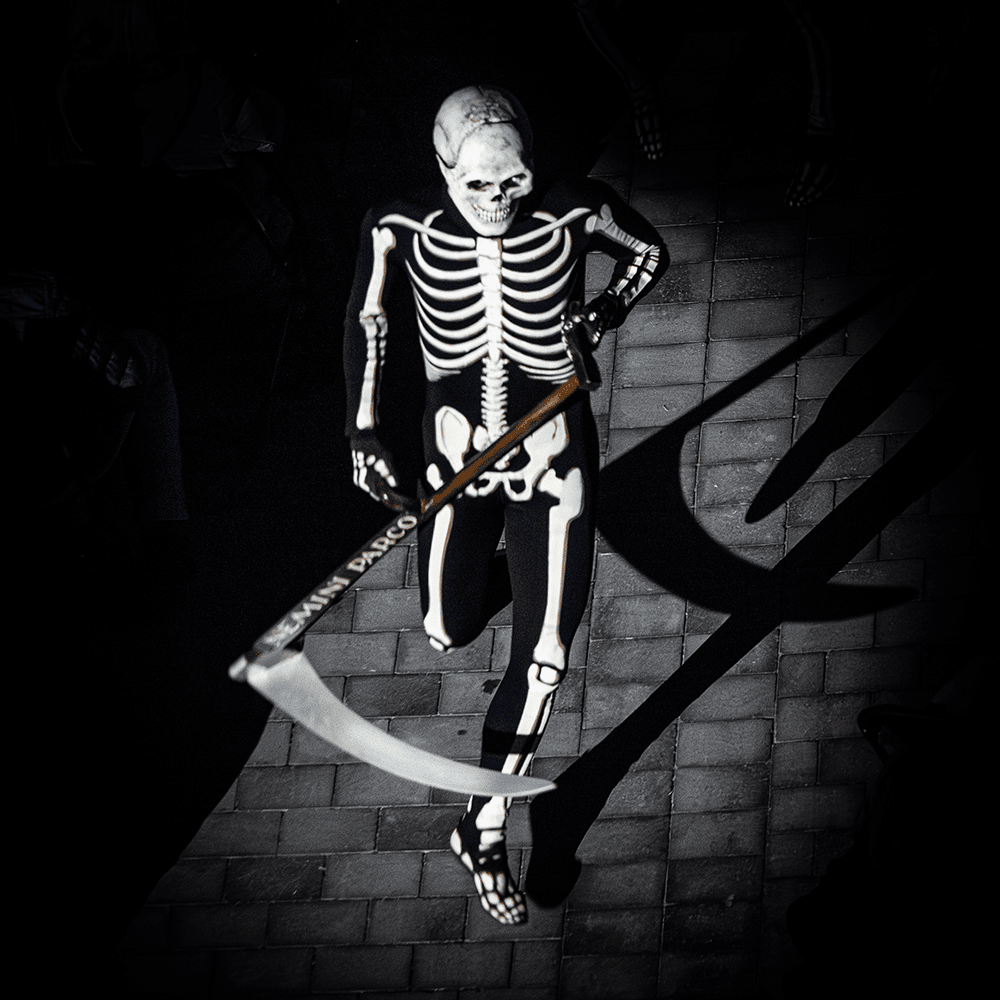
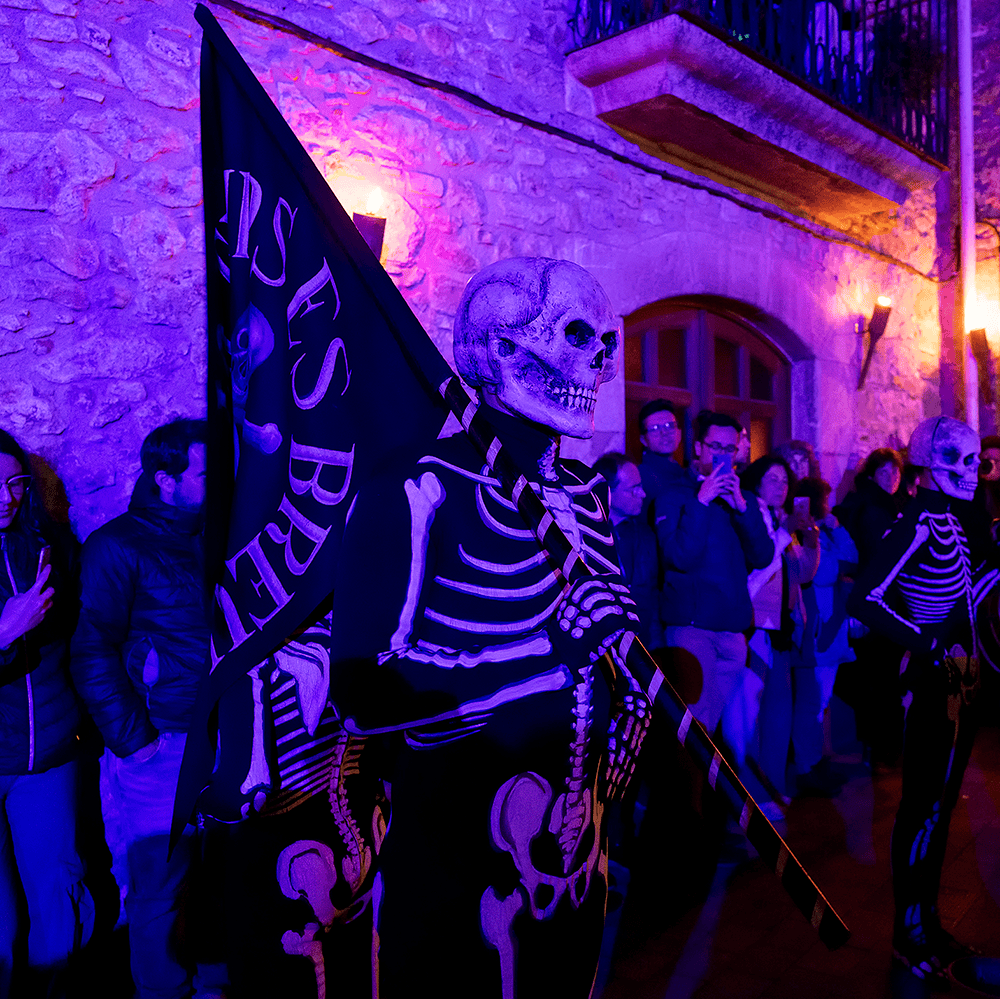
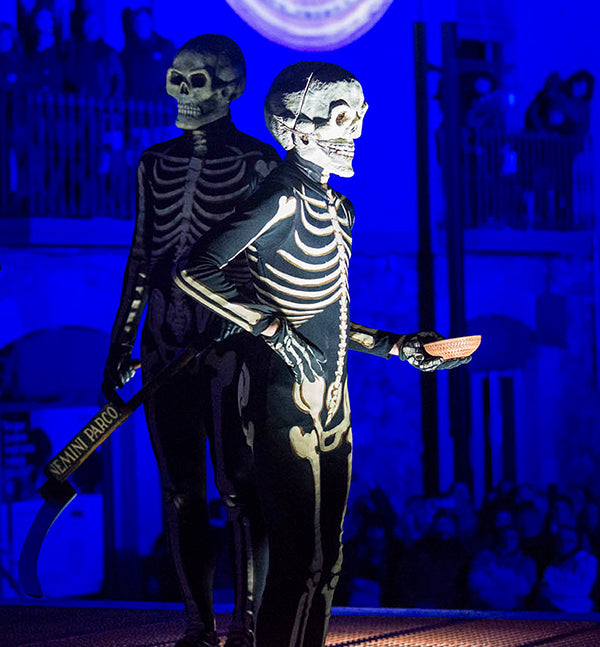

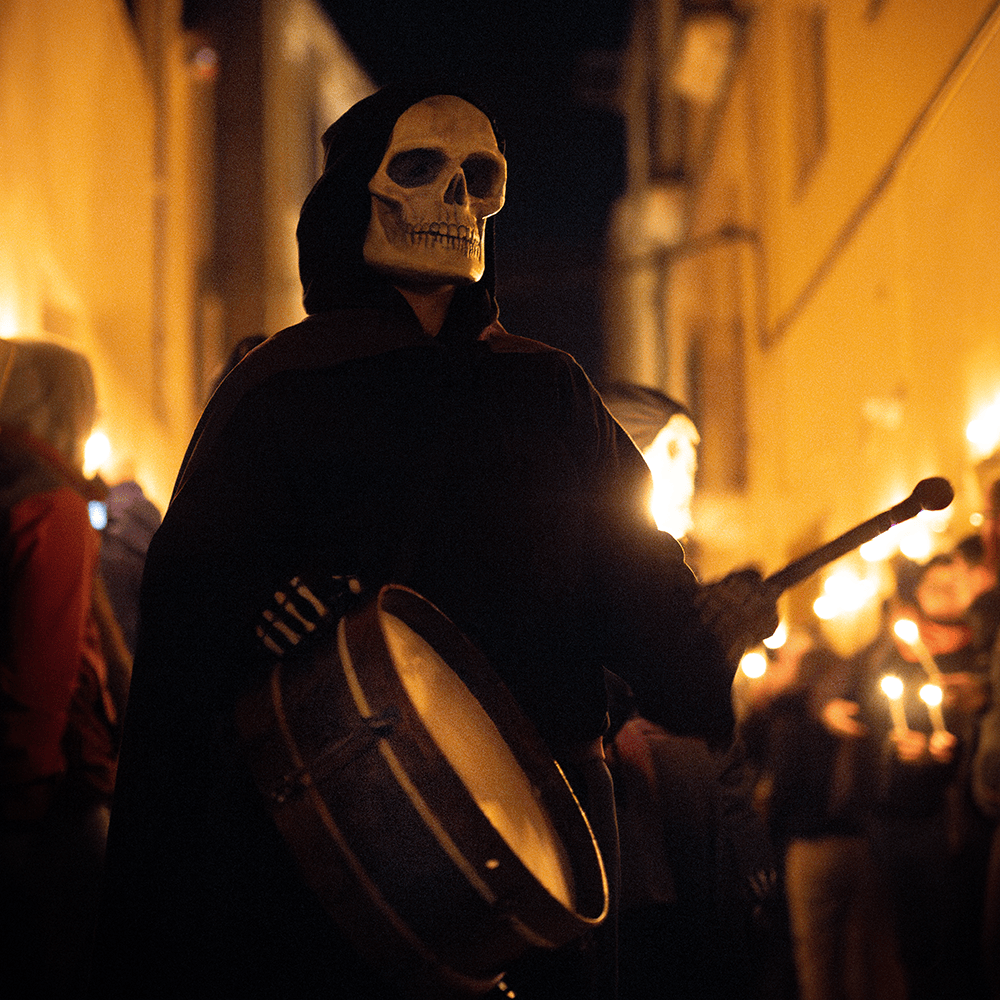
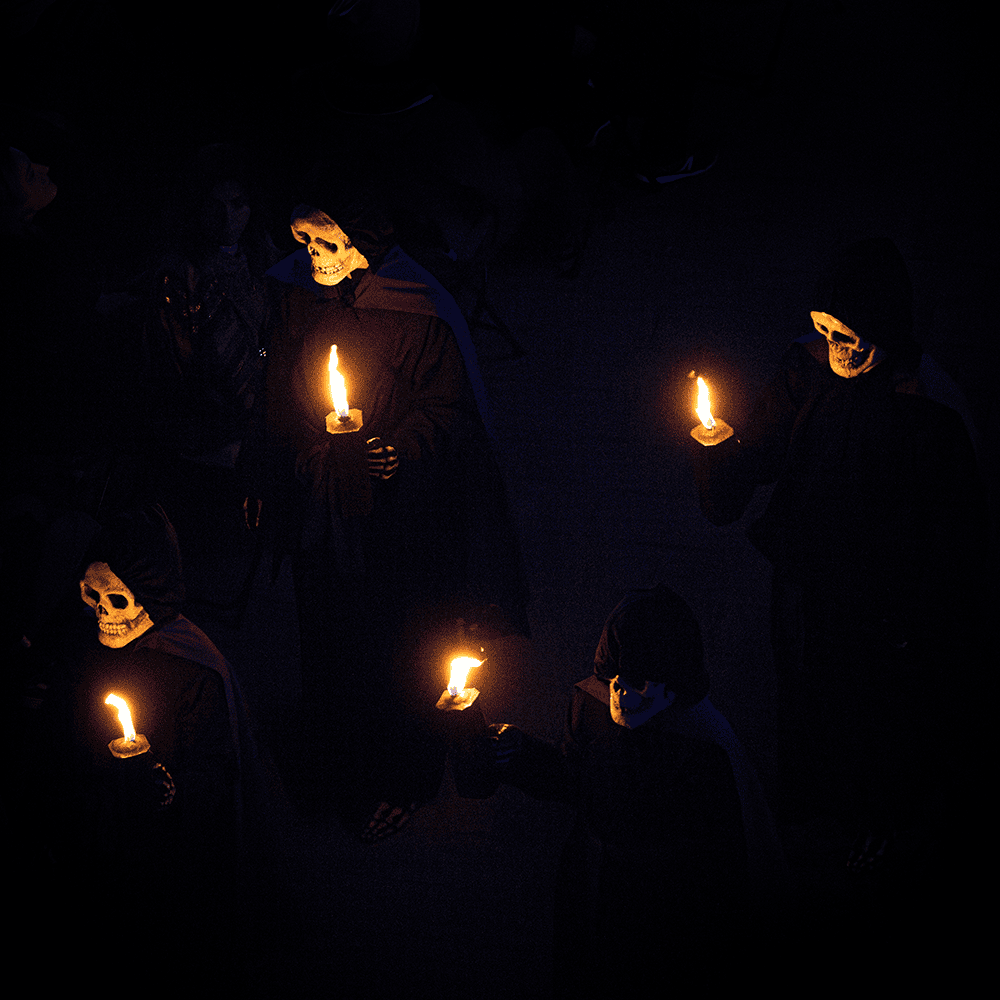
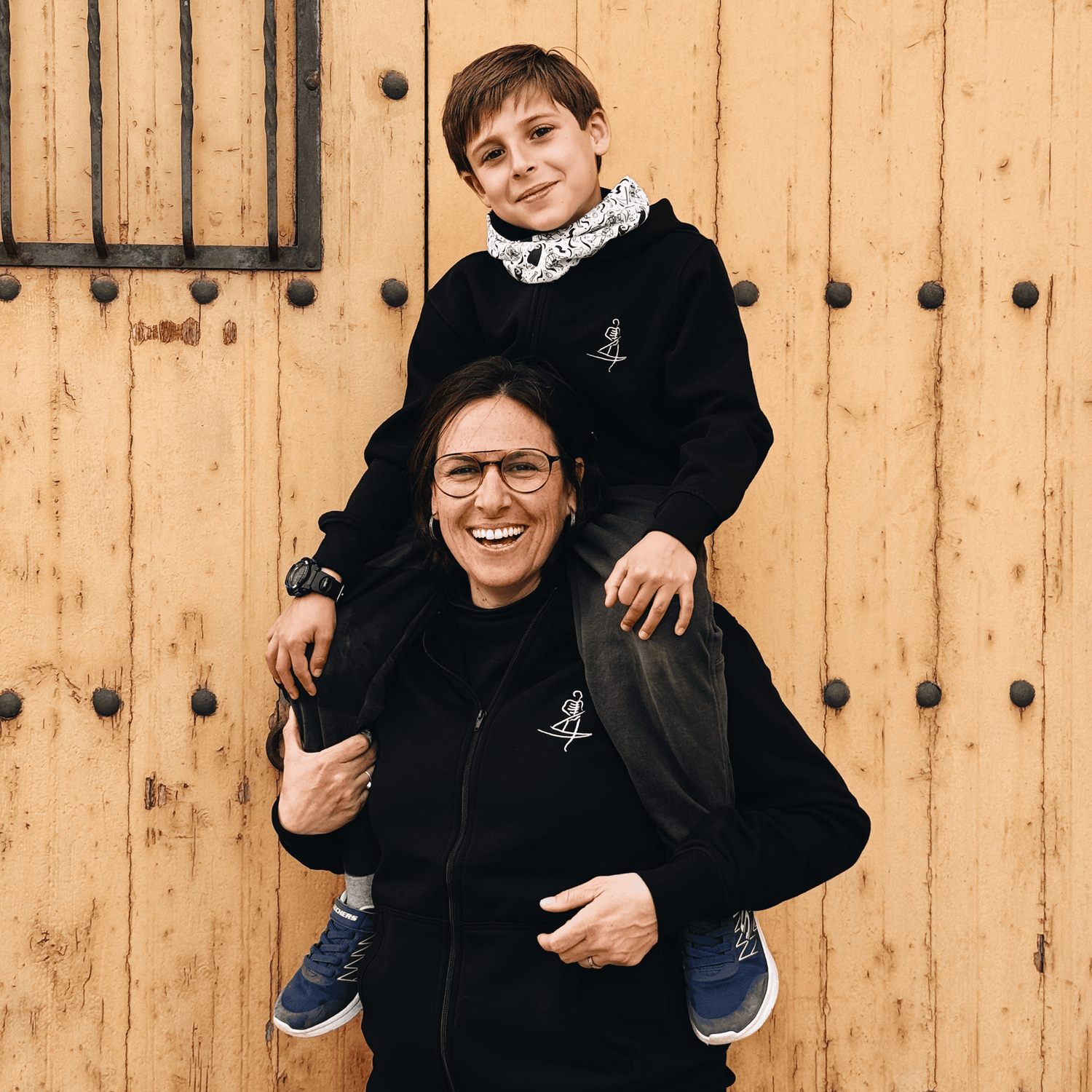
- Regular price
-
15,00€ - Regular price
-
- Sale price
-
15,00€
- Regular price
-
20,00€ 25,00€ - Regular price
-
- Sale price
-
20,00€ 25,00€
- Regular price
-
45,00€ 50,00€ - Regular price
-
- Sale price
-
45,00€ 50,00€
DISCOVER THE WHOLE VARIETY
Dance-inspired products
In this dance, five skeletons leap to the sound of a tabal, arranged in the shape of a cross. They are accompanied by a retinue of four other figures, who, carrying torches, illuminate the scene and lend a sinister air that gives it meaning.
The main body of the Dance of Death is made up of two adults (Dalla and Bandera) and three children (two Saucers, who carry a plate with ashes, and the Clock, who points to a clock without drills). Each character is named after the symbol they carry in their hands and through which they repeatedly and constantly communicate the maxims about death. Verges' Dance of Death warns us that death spares no one (with the flag), cuts short our lives (with the scythe), and reminds us that at any time (clock without drills) we will end up turning into ashes (scythes).









